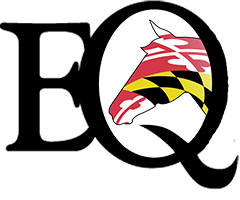On January 29, 2020, the Equine Disease Communication Center posted that two horses at a farm in Montgomery County were confirmed with strangles. According the EDCC, a 29 year old Quarter Horse gelding first showed clinical signs on January 14 while a 12 year old pony mare started showing symptoms on January 16. Both horses were confirmed positive for strangles on January 22 and the facility issued their own voluntary quarantine.
There are two other horses living at the facility. Neither have shown any clinic symptoms as of January 29.
In the state of Maryland, strangles is considered a reportable disease however, according to Maryland State Veterinarian Dr. Michael Odian, MDA has not received notice of this case directly from the treating veterinarian nor from the farm owner. “We are investigating and are glad to hear the facility has issued its own quarantine,” Dr. Odian said.
Dr. Odian officially stepped into the role of State Veterinarian earlier this month and has been practicing veterinary medicine for nearly 25 years. He own and operates a private practice based in Carroll County that specializes in sport horse medicine.
Dr. Odian explained that in the case of strangles, MDA prefers that the attending veterinarian keep the office updated on the case. “We will only step in [on site] if major action is needed,” he explained. For strangles, Dr. Odian recommends quarantine as well as vaccinating any other horses on the property with the intra-nasal strangles vaccine. “Even after the vaccine is given, if any other horses have been infected, they will show clinical symptoms within two weeks of their first exposure,” he said.
Dr. Odian also recommends that the quarantine not be lifted until two weeks after the last horse is no longer showing symptoms. “At that time, it is also very important to disinfect everything,” he added.
Strangles is a respiratory illness caused by by the bacteria Streptococcus equi. The infection is localized to the upper respiratory system most commonly is noted by significant swelling behind the lower jaw and along the sides of the face. Horses with strangles also typically have a greenish-yellow mucus discharge from their nostrils. Other symptoms include lack of appetite, high fever, wet cough and strained breathing.
With treatment, horses can typically recover from strangles.











